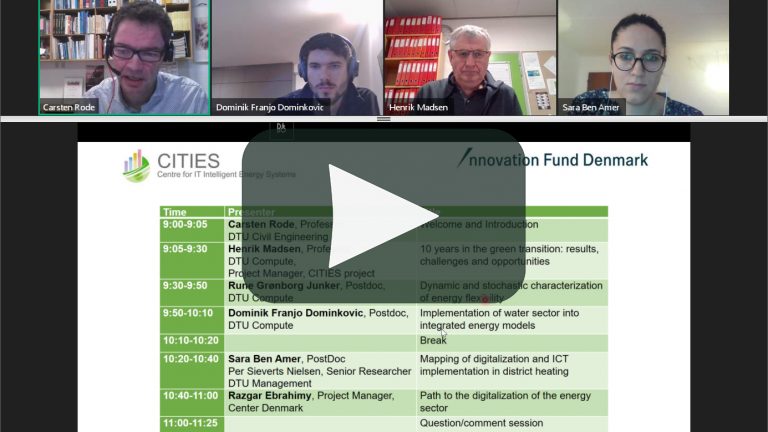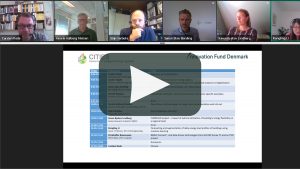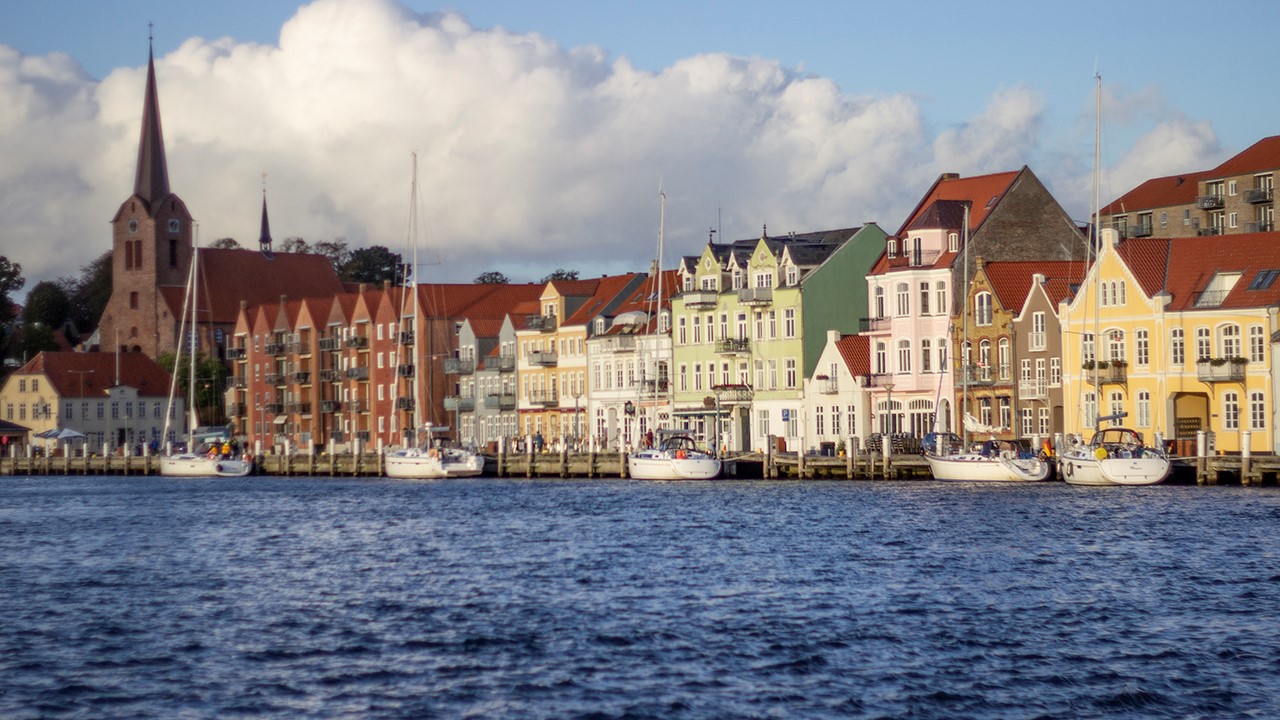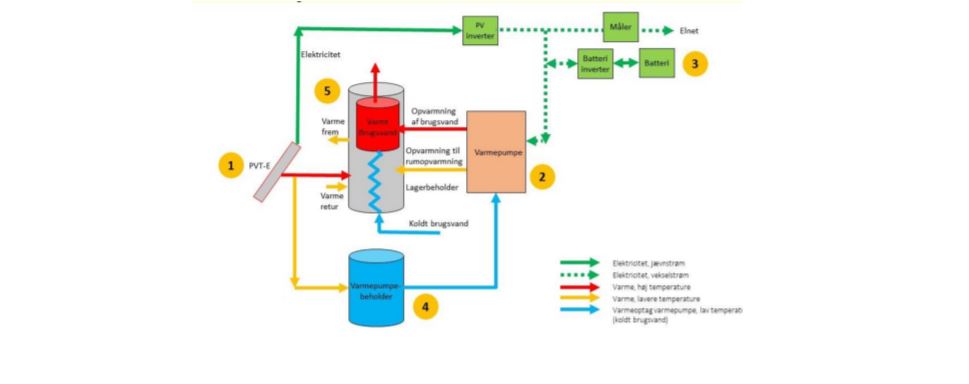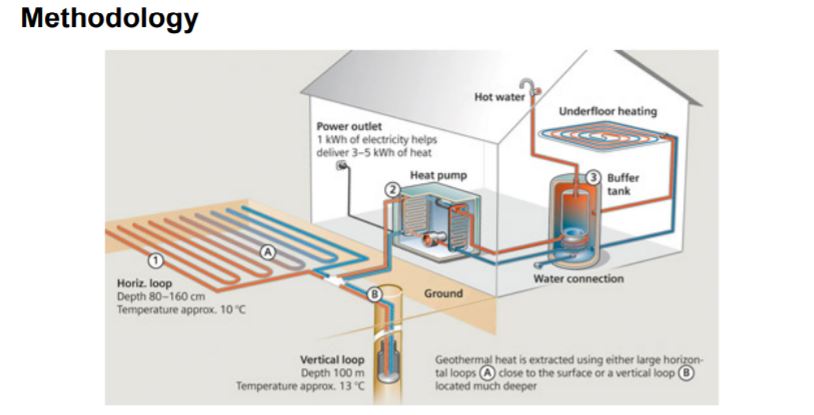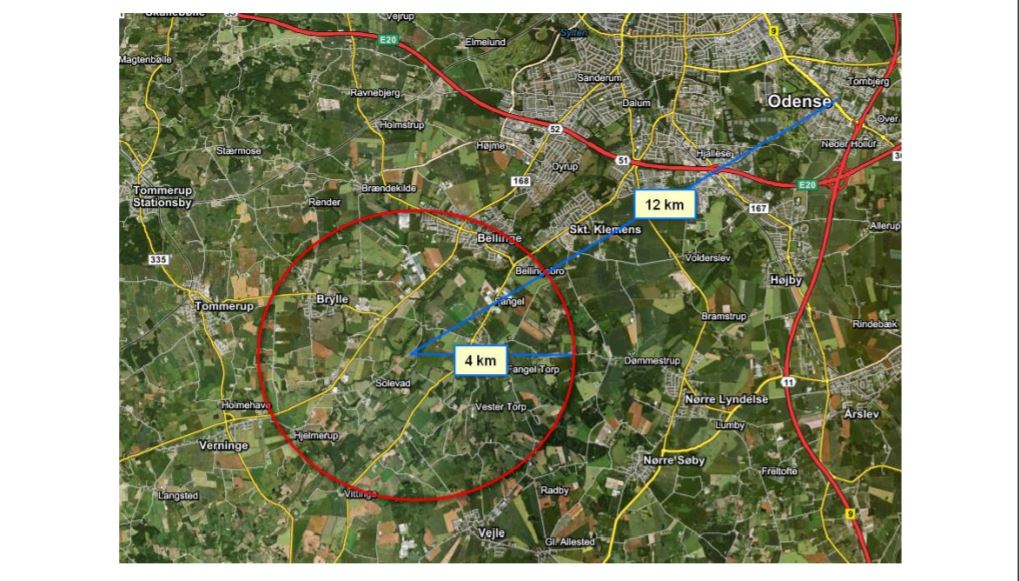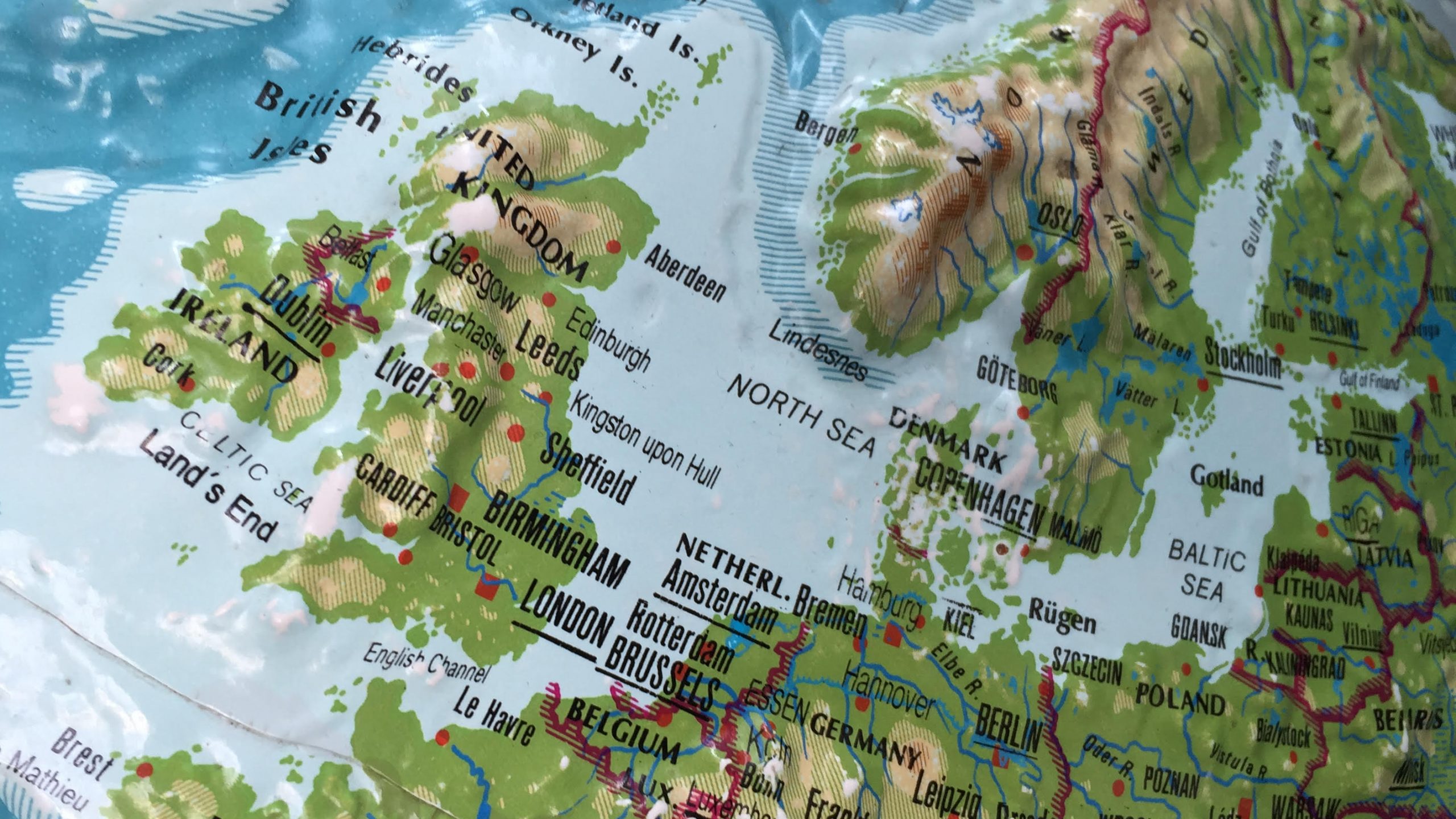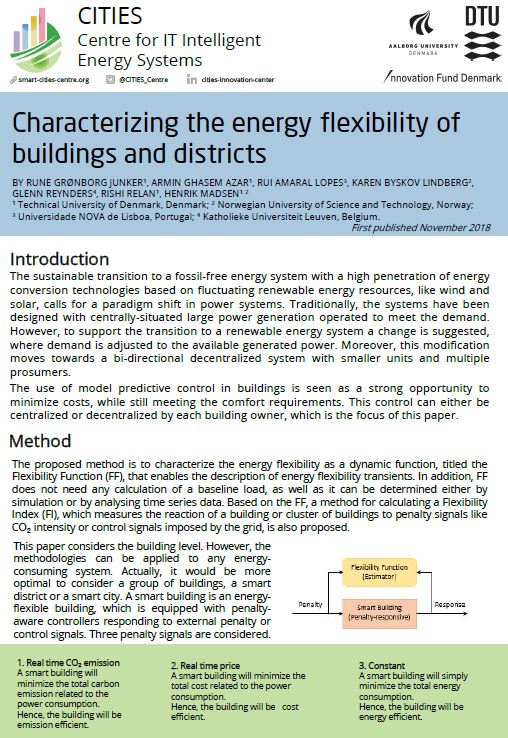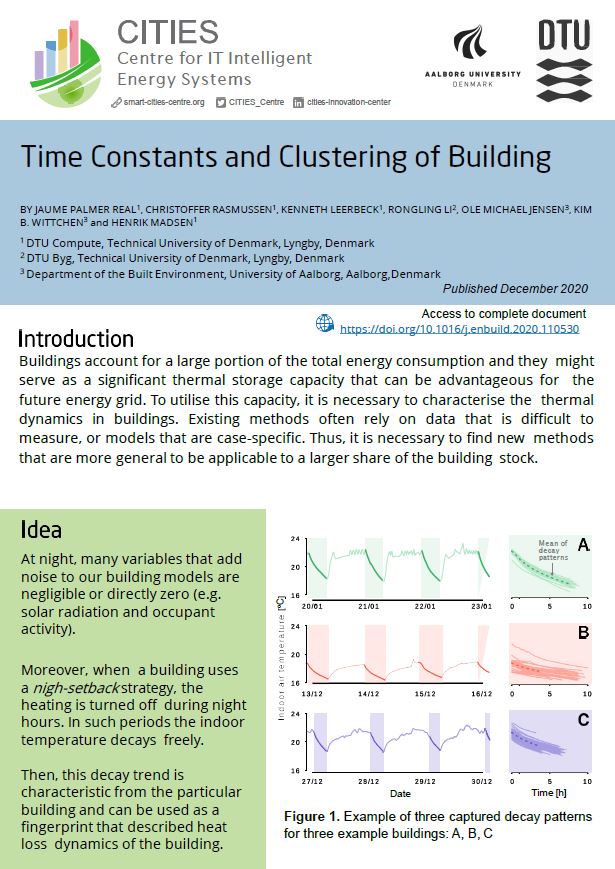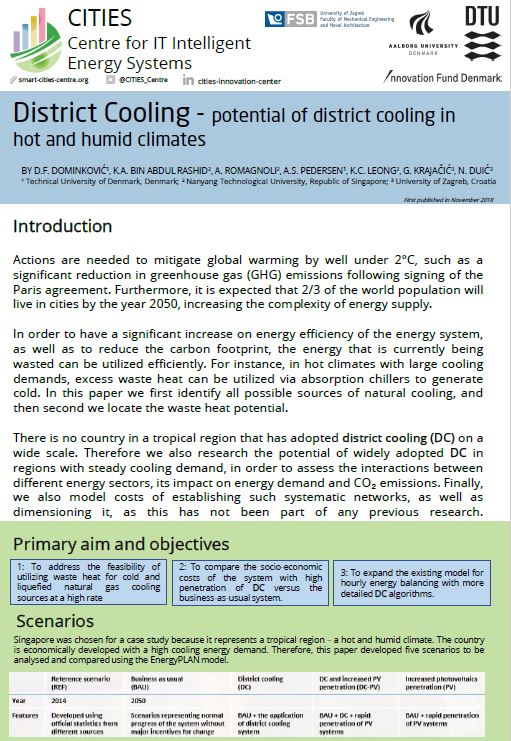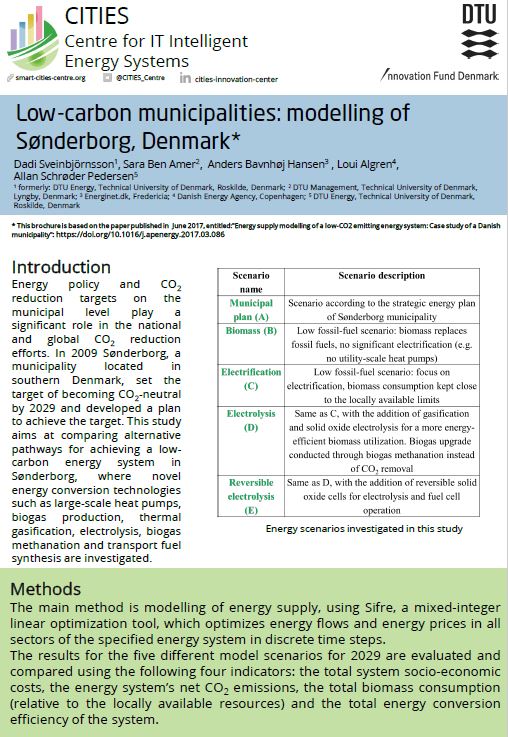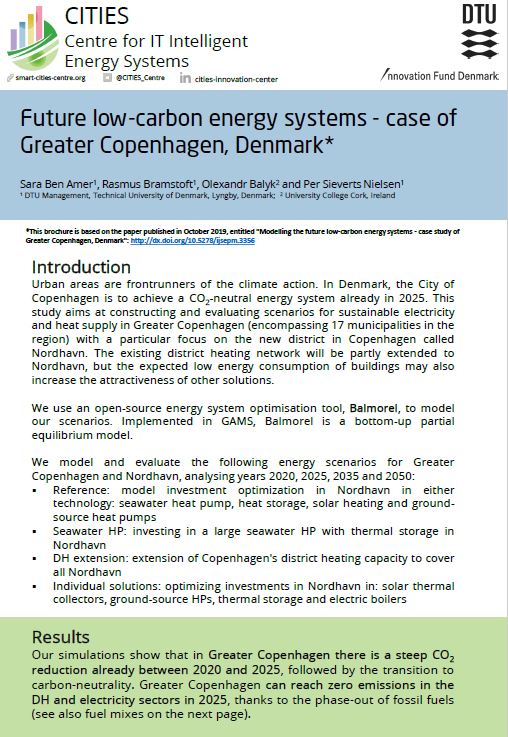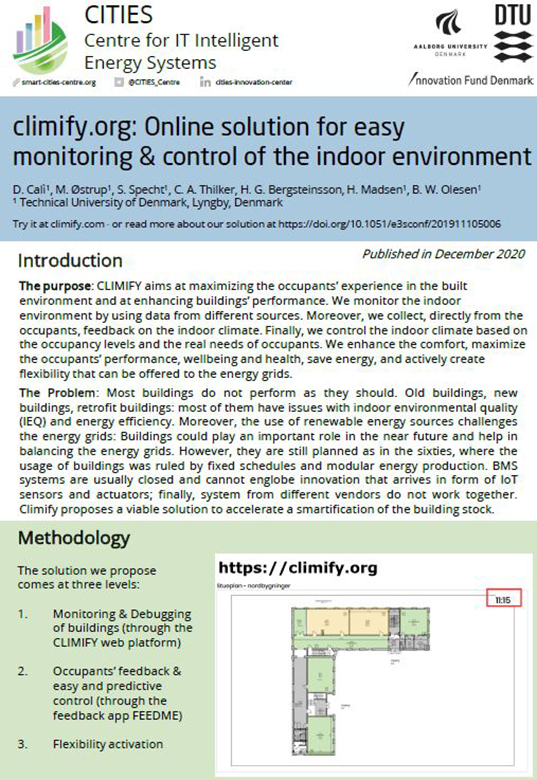Smart Buildings
The research in CITIES has conducted projects on smart-building solutions related to the integration of energy systems.
Smart buildings will in the future not only be sensitive to the actual conditions such as weather and the presence of occupants, but they will also reflect on the connecting energy and water grids or price signals.
This way smart buildings will be one of the many components that enable the city systems to optimize and enable a large share of renewable energy.
To enable buildings to interact optimally with the surroundings, data must be interexchange and IT systems have to compute relevant control settings in real-time and communicate to the control system of the buildings.
In the CITIES project, we have shown how to interexchange and use data and how IT systems have to compute relevant control settings in real-time and communicate to the control system of the buildings.
Another important result from CITIES is that we need to use data-driven methods to look into buildings to see how they perform before we decide where to do energy renovation. – See the recommendations and videos below.
The CITIES partners have defined seven recommendations for this topic:
Designed solutions must respect consumer preferences, e.g., in relation to automatic self-acting solutions; Smart controllers should offer users to select preferences regarding energy efficiency, CO2 efficiency and cost efficiency; The design of ICT (information and communications technology) solutions must be robust; Buildings should be prepared for energy flexible operation; A data-driven alternative to the Smart Readiness Indicator for describing the flexibility must be considered; Data-driven approaches to energy labelling and energy performance characterization (energy signature) must be adapted; Smart buildings shall preferably adopt forecasting.
Learn more in the list below and see the videos.
Flexibility / virtual storage – a keyword
Flexibility / virtual storage is a keyword to green transition in a cheap and effective way and in planning and operation.
To obtain the Danish climate goals for 2030 and 2050 we need to focus on digitalization and sector coupling. Digitization is the link that enables the coupling of energy sources with real-time matching of energy demands and production through data intelligence and IoT devices in integrated energy systems.

In the CITIEs project, we have investigated how much flexibility can help us achieve climate goals.
We note these characteristics for flexibility:
- Flexibility (or virtual storage) characteristics:
- Wastewater systems can provide storage 0.2-6 hours ahead
- Supermarket refrigeration can provide storage 0.5-2 hours ahead
- Buildings thermal capacity can provide storage up to, say, 2-10 hours ahead
- Buildings with local water storage can provide storage up to, say, 2-18 hours ahead
- District heating/cooling systems can provide storage up to 1-3 days ahead
- DH systems can provide seasonal/long term storage solutions
- Gas systems can provide seasonal/long term storage solutions
Using SDEs to understand energy efficiency in buildings
Jaume Palmer Real is a PhD student at DTU COMPUTE – Department of Applied Mathematics and Computer Science – at the Technical University of Denmark. In his YouTube-video, he tells about his PhD project: Stochastic Differential Equations (SDE) for Modeling Energy Systems Integration – and about how to use SDEs to understand energy efficiency in buildings.
Data-driven Methods to Characterize the Dynamic of Buildings
At CITIES final conference on November 9, 2020, Carsten Rode, Professor at DTU Byg and Work Package Manager on CITIES & Christoffer Rasmussen, PhD at DTU Compute explained how they have developed a concept whereby they use mathematics/statistics to analyze data collected with high frequency from sensors in the buildings to optimize energy efficiency and to use the buildings as energy flexible storage.
Smart Cooling - Singapore, Grindsted and the future
At CITIES final conference November 9, 2020 postdoc Dominik Franjo Dominkovic talked about the research we have done in Singapore to utilized excess waste heat via absorption shillers to generate cold and analyzed the potential of widely adopted district cooling in tropical regions, with steady cooling demand. He has used the same methods on a demo case in Grindsted for cooling meeting rooms and the research continues now in ‘Cool-Data’ – with data centres.
Characterisation and Integration of Energy Flexibility
Flexibility in electricity consumption will be a keyword for the green transition, in the energy system of the future based on solar and wind. Rune Grønborg Junker from DTU Compute talks about how to unlocking consumers flexibility potential.
Webinar: Accelerating the green transition using AI and energy system integration
The green transition calls for the next level of digitization and a need for new tailored methods, i.e. energy system-oriented AI, Big Data Analytics, Grey-Box Modelling, Cloud-Fog-Edge Computing, System-of-Systems, IoT, Resilience, User-involvement, and Data-sharing principles. This special session provides a number of talks highlighting the status and challenges in achieving an efficient implementation of the future low-carbon society.
CITIES and what next, Peter Rathje, CEO ProjectZero
Seven years of research in CITIES has generated a lot of new knowledge to use in cities to make them energy-smart. Now it is time to use the knowhow to reach the green transition with 70 pct reduction of climate gasses, Peter Rathje, CEO at ProjectZero – Sønderborg, Denmark, says. One extremely important way is to use triple-helix cooperation’s (university, industry, and government) to help cities and society overcome complexity.
The low-carbon transition: Challenges, status and possibilities
From CITIES – Centre for IT-Intelligent Energy Systems – final conference November 9, 2020: KEYNOTE from Olivier Corradi, CEO at Tomorrow: If we don’t do anything about the CO2-emission, we have nowadays, we will need a Corona lockdown period all over the world every year as we saw in spring 2020 to keep the temperature rise at 2 degrees as in the Paris Agreement. So we need new ways of doing things – hereunder computing the demand and production in relation to when the energy comes from renewable sources, Olivier says.
Contemporary digital and data-driven methods are key to optimize the operation of buildings and district energy systems such that use of fossil fuels can be minimized without compromising on comfort and functionality of the built environment. The CITIES workshop gives an overview of potentials and state-of-the-art technologies in the field.
Recommendations
-
Designed solutions must respect consumer preferences, e.g. in relation to automatic self-acting solutions
To foster the acceptance by consumers, it is essential that consumer preferences are modeled and respected by solutions in smart buildings, in particular, most users prefer automatic solutions. -
Smart controllers should offer users preferences regarding energy efficiency, CO2 efficiency and cost efficiency
When designing control solutions the user should be able to provide their preferences, which should take into account the trade-off between energy savings and flexibility, automation and user control, etc.
-
The design of ICT (information and communications technology) solutions must be robust
When designing ICT solutions, there should be a focus on reliability and robustness towards disruptions. For example, the broadcasting of price signals as one-way communication is less prone to disrupted communication than a two-way communication setup.
-
Buildings should be prepared for energy flexible operation
By using thermal mass and other storage possibilities in buildings, time shifts between demand and supply are possible. This adds flexibility to the energy consumption of the building but also the overall energy system which enables a larger share of renewable energy and avoids unnecessary peaks. -
A data-driven alternative to the Smart Readiness Indicator for describing the flexibility must be considered
The Smart Readiness Indicator is based on deductive reasoning, and this method does not lead to the actual flexibility. We need a data-driven alternative for a description of flexibility. Furthermore, such an evidence based data-driven approach should be able to automatically calibrate to changes of a building. -
Data-driven approaches to energy labelling and energy performance characterization (energy signature) must be adapted
The energy performance is traditionally given based on deductive methods. This approach is not optimal since deductively provided information about the building, quality of insulation, workman shop, etc. are typically not reflecting reality. Consequently, we need data-driven approaches for energy labelling. The approaches must include self-calibration features such that changes of a building are automatically taken into account. Similarly, we need data-driven methods for providing a more detailed fingerprint or dynamic energy signature of buildings. -
Smart buildings shall preferably adopt forecasting
In combination with flexible operation, the use of forecasts such as weather or day-ahead demand forecasts allows to optimize the supply of green energy to a building. Instead of following the demand instantaneously as it is traditionally the case, the energy supply can be planned ahead to maximize the use of green energy.
Solutions/methodologies
-
Tool for simulating occupancy profiles for private households
ProccS.org is a tool for simulating occupancy profiles for private households. The application creates occupancy profiles for bathroom, kitchen, living room and bedrooms. The profiles can be downloaded in csv-format. -
climify.org: Online solution for easy monitoring & control of the indoor environment
With the tool CLIMIFY, we enhance the comfort, maximize the occupants’ performance, wellbeing and health, save energy, and actively create flexibility that can be offered to the energy grids. We aim at maximizing the occupants’ experience in the built environment and at enhancing buildings’ performance. We monitor the indoor environment by using data from different sources, collecting data directly from the occupants, feedback on the indoor climate and control the indoor climate based on the occupancy levels and the real needs of occupants. Learn more at https://climify.com/
Demo projects
Energy Supply Modelling in cities: A Case Study of Sønderborg Municipality
The demonstration project has developed a model and evaluated scenarios for Sønderborg’s energy system in 2029 in order to identify ways of increasing the efficiency and integration of the system while minimizing CO2 emissions and socioeconomic costs.
Optimal control of BIPVT-E systems
The objective of this demo project is to develop methods for optimal control of heating systems with Building Integrated PhotoVoltaic-Thermal Energy absorbers (BIPVT-E). The BIPVT is a combined solar electric and -thermal module, which is installed directly into the facade or roof surface of the building.
Control of heat pumps
The demonstration project has implemented, tested and demonstrated a fluidborne heating system with a heat pump and a solar collector in a domestic building that makes optimal use of renewable energy from the grid.
Building Energy Demand Modelling
In this demo case CITIES has developed methodologies for the modelling of energy demand and flexibility potentials for whole districts and cities by classify the buildings in a given area into types and sum up according to the number of each type within the area. CITIES used measured data (from heat, cooling, electricity and gas ) from real buildings in Sønderborg, Denmark, to validate the method.
Load forecasting for District Heating (and greenhouses)
By collecting data from Greenhouse consumers and weather observations the demo case has derived an offline model structure for load forecasting in greenhouses and established an online setup for load forecasting in greenhouses. In the online setup, the model parameters have been adapted to the actual dynamics.
Optimal Control of District Heating Supply Temperatures to Greenhouses
The demo case has used research from a parallel demo case on load forecasting in greenhouses, and another demo project on dynamic prices for DH systems to develop methods for optimal control of district heating supply temperature to greenhouses. on load forecasting in greenhouses, and another demo project on dynamic prices for DH systems.

